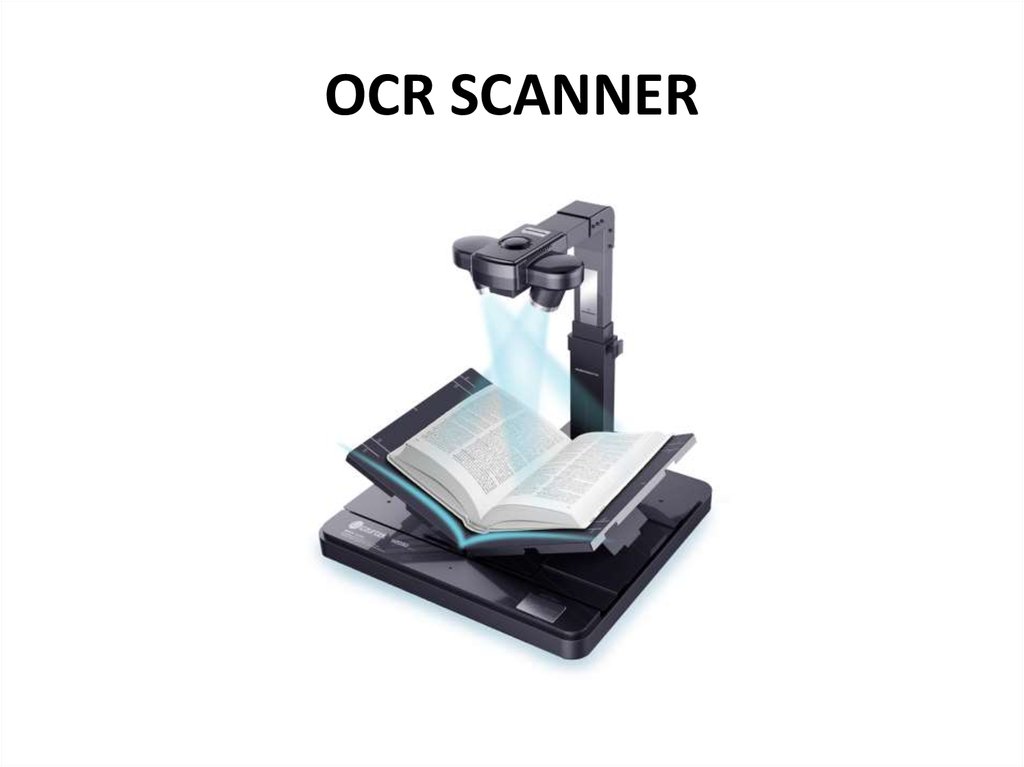

This method uses machine learning and AI technology to analyze the different elements of the text (curves, loops, lines, etc.). ICR uses data capture tools to read text handwritten or cursive text.
#OCR SCANNER DEFINITION SOFTWARE#
The OCR software then converts the extracted data into electronic documents.

This can be done through two main algorithms, pattern matching and feature extraction.

Here, the OCR engine corrects errors through methods like de-skewing, binarization, zoning and normalization to improve the accuracy of scanned images.Īrtificial intelligence (AI) tools can be used here to identify original characters from a scanned image or document. The file is commonly rendered in black and white, which will then be used to differentiate the brighter (background) and darker (characters) regions from each other. OCR technology commonly works through a step-by-step process of:Ī scanner reads physical paper documents and converts them into a scanned image. OCR software applications might operate slightly differently, but they do adhere to a few universal rules.
#OCR SCANNER DEFINITION FULL#
IWR works on more free form and cursive data and works with full words and phrases, unlike ICR that works on the character level.Optical character recognition (OCR) technology is a business solution for automating data extraction from printed or written text from a scanned document or image file and then converting the text into a machine-readable form to be used for data processing like editing or searching. IWRĪlso, ICR has now a more updated spin-off of its own Intelligent Word Recognition.
#OCR SCANNER DEFINITION UPDATE#
OCR has a fixed and a limited database of fonts to work with while ICR contains an electronic neural system that allows the software to automatically update the database and learn any new type of font and style of handwriting that improves accuracy and character recognition.Īlthough ICR is more expensive than OCR, the high-end ICR software manages to increase its efficiency over time and experience.īut, due to the learning approach mentioned earlier, the result sometimes may generally drop down to 97+ reading handwriting accuracy but is far better and useful than the manual labor or a basic scanner. So, if you work on handwritten notes and manuscripts, Intelligent Character Recognition is what you need. ICR, on the other hand, specializes in converting multiple types of handwriting into digital characteristics. No need to retype the hard copies that OCR reads and converts into a word processing file, which furthermore works with a computer voice-over utility and thus is the ease of access tool.

With Optical Character Recognition you may never have to manually correct or search through multiple pages, speeding the workflow within the organization. OCR is more cost-effective, hence if your office work revolves around digital or hard copies then it might be the perfect on-budget tool for you.įurthermore, if you couple it with other technologies such as scanning and file compression OCR generates editable and searchable documents while being quick, easy, and accurate. Automating for efficiency is common, but few benchmarks measure accuracy-effort trade-offs, and relatively few vendors provide optical character recognition/intelligent character recognition software.” OCR vs ICR: Difference between OCR and ICR and their Benefits:Īccording to Gartner’s research report, “Businesses spend billions of dollars rekeying data from a variety of paper forms. This software extends the radar of OCR standard font recognition property and allows different styles and fonts of handwriting, and this is mainly what makes ICR different from OCR. Intelligent Character Recognition is basically an advanced form of OCR that processes Handwritten texts.


 0 kommentar(er)
0 kommentar(er)
